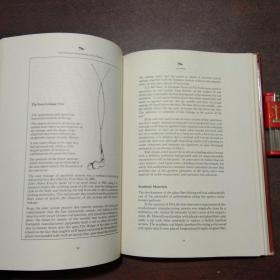Introduction:
Pickerel, known for their feisty nature and impressive fighting skills, are a popular target for anglers looking for a challenging catch. Whether you're a seasoned fisherman or a beginner, mastering the techniques to catch pickerel can elevate your angling experience. In this article, we'll delve into the art of pickerel fishing, offering a step-by-step guide with detailed diagrams to help you become a pickerel fishing pro.
Understanding Pickerel Behavior:
Before we dive into the fishing techniques, it's crucial to understand the behavior of pickerel. These fish are known for their aggressive nature and are often found in freshwater environments such as lakes, rivers, and ponds. Pickerel are opportunistic feeders and can be caught on a variety of baits. Knowing their habits can help you tailor your approach to increase your chances of success.
Choosing the Right Gear:

1 Rod and Reel: For pickerel fishing, a medium-heavy to heavy-duty rod with a fast action is ideal. This type of rod will allow you to set the hook effectively and handle the strong fight pickerel are known for. A spinning reel with a smooth drag system is recommended, as it will help you manage the fish's energy without the risk of breaking the line.
2 Line: Use monofilament line in the 10-20 lb test range. This line thickness will provide enough strength to handle pickerel without being too heavy, which can spook the fish.
3 Lures and Baits: Pickerel can be caught on a variety of lures and baits. Some popular choices include:
- Jigs
- Spinnerbaits
- Soft plastics
- Live bait like minnows or shad
Pickerel Fishing Techniques:
1 Locating Pickerel: Pickerel are often found in areas with structure, such as weeds, rocks, and logs. Look for areas where these structures converge, as pickerel tend to lurk in these spots waiting for prey.
2 Lure Selection: When choosing lures, consider the water temperature and the pickerel's feeding patterns. In cooler water, slower-moving lures like jigs or soft plastics can be effective. In warmer water, faster-moving lures like spinnerbaits might entice the fish.
3 Casting and Retrieval: When casting, be gentle and avoid spooking the fish. If you're using a lure, start with a slow retrieve and vary the speed based on the water's current and the fish's response. With live bait, allow the bait to swim naturally and let the current carry it to the fish.
4 Setting the Hook: Pickerel are known for their strong strikes, so be ready to set the hook immediately when you feel a tap. Use a quick, firm hookset to secure the fish.
Pickerel Fishing Techniques with Diagrams:
1 Diagram 1: Pickerel Fishing Setup [Include a diagram showing the complete setup including rod, reel, line, and lure.]
2 Diagram 2: Casting Techniques [Include a diagram illustrating the correct casting angle and distance to avoid spooking pickerel.]
3 Diagram 3: Lure Retrieval Methods [Include diagrams showing different retrieval techniques such as slow, steady retrieve, or twitch and pause methods.]
4 Diagram 4: Hookset Technique [Include a diagram demonstrating the proper hookset technique to ensure a successful catch.]
Conclusion:
Catching pickerel requires patience, practice, and the right techniques. By understanding the fish's behavior, selecting the appropriate gear, and mastering the art of lure presentation, you'll be well on your way to becoming a pickerel fishing expert. Remember, each fishery is unique, so be prepared to adapt your approach as needed. With the right knowledge and a bit of luck, you'll be reeling in these feisty predators in no time. Happy fishing!












